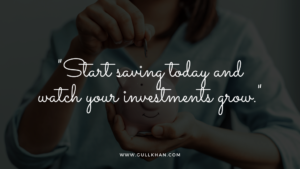Lesson 4: Navigating the Role of Luck in Financial Success
First and foremost, it’s imperative to acknowledge the undeniable presence of luck in shaping our financial destinies. Whether bestowing upon us windfalls of prosperity or subjecting us to the trials of adversity, luck wields an undeniable influence on our financial journeys.
Yet, amid the capricious whims of fate, there lies a crucial lesson in humility. When the winds of fortune blow in our favor, it’s all too easy to bask in the glow of our accomplishments and overestimate our own abilities. However, maintaining a humble demeanor reminds us of the ephemeral nature of success and the role that chance plays in our achievements.
Furthermore, cultivating empathy towards others is essential, especially when faced with challenges or setbacks. Just as we may experience the highs and lows of fortune, so too do others navigate their own trials and tribulations. By extending compassion and understanding, we foster a sense of camaraderie and support in the face of adversity.
Indeed, every financial endeavor carries an inherent element of risk—a truth we must acknowledge and embrace. Whether embarking on a new business venture, investing in the stock market, or pursuing career opportunities, risk permeates every decision we make. However, it is through calculated risk-taking that we unlock the potential for growth and prosperity.
Lesson 5: Distinguishing Between Risk and Volatility
 In Morgan Housel’s “The Psychology of Money,” a crucial distinction is made between these two fundamental concepts, shedding light on their distinct roles in the realm of finance.
In Morgan Housel’s “The Psychology of Money,” a crucial distinction is made between these two fundamental concepts, shedding light on their distinct roles in the realm of finance.
Risk, in its essence, embodies the permanent loss of capital—an outcome dreaded by investors and entrepreneurs alike. It is the specter of financial ruin that looms over every investment decision, reminding us of the ever-present possibility of loss. When ventures falter, businesses flounder, or markets crash, it is the harsh reality of risk that rears its unforgiving head, leaving in its wake a trail of shattered dreams and depleted fortunes.
On the other hand, volatility—a term often used interchangeably with risk—represents something altogether different. It is the ebb and flow of market fluctuations, the rollercoaster ride of short-term price movements that can send investors on a wild emotional journey. While volatility may induce panic and uncertainty, it does not necessarily equate to permanent loss. Rather, it is the transient nature of market dynamics, subject to the whims of supply and demand, investor sentiment, and external factors beyond our control.
Consider, for instance, the recent surge in cryptocurrency markets—a realm notorious for its dizzying volatility. As Bitcoin’s price soared to unprecedented heights, reaching a staggering $65,000, only to plummet to $16,000 in a matter of months, investors were left reeling from the abrupt shift in fortunes. Yet, amidst the chaos, a crucial distinction emerges: volatility does not equate to permanent loss. It is only when investors succumb to fear and sell their assets at a loss that the true impact of volatility is felt.
Indeed, navigating the treacherous waters of risk and volatility requires a keen understanding of their nuances and implications. While risk may pose the threat of irreparable harm, volatility presents an opportunity for savvy investors to capitalize on market fluctuations and seize upon undervalued assets.
So, as you venture forth into the unpredictable terrain of financial markets, remember to distinguish between risk and volatility. Embrace the inherent uncertainty of market dynamics, but remain steadfast in your commitment to prudent decision-making and long-term investment strategies.
Lesson 6: The Timeless Power of Patience in Wealth Building
Picture this: you, eager to conquer the financial markets, poised on the brink of opportunity, ready to pounce on the next big investment. But wait—before you succumb to the allure of timing the market, heed this sage advice: patience is the key to long-term success.
Attempting to time the market, whether it be the stock market, the cryptocurrency market, or any other financial arena, is akin to gambling—a risky endeavor fraught with peril. Instead, embrace a strategy of consistency and discipline, focusing on long-term horizons rather than short-term gains.
Consider the humble ETF, a staple of many investors’ portfolios. Rather than engaging in the futile exercise of timing the market, savvy investors opt for a strategy of regular, consistent investment, employing dollar-cost averaging to mitigate risk and maximize returns over time.
The beauty of patience lies in its ability to offset financial mistakes and weather the storms of market volatility. Take, for instance, the hypothetical scenario of a novice investor entering the cryptocurrency market at its peak, only to witness a precipitous decline in value.
While the temptation to panic may be strong, a patient investor understands that time is on their side. With a long-term perspective and a steadfast commitment to their investment strategy, they remain unfazed by short-term fluctuations, confident in the knowledge that, over time, the market will rebound and their investments will flourish once more.
Indeed, the lesson here is clear: avoid the pitfalls of market timing and embrace the power of patience. Trust in the time-tested principles of consistent investing, prudent risk management, and long-term horizons. For in the grand tapestry of wealth building, it is patience that weaves the threads of financial success, guiding investors towards a brighter, more prosperous future.
Lesson 7: The Art of Adaptability in Financial Strategies
 As the winds of change sweep through markets and circumstances shift like sand dunes in the desert, your financial strategies must remain flexible, nimble, and ready to pivot at a moment’s notice.
As the winds of change sweep through markets and circumstances shift like sand dunes in the desert, your financial strategies must remain flexible, nimble, and ready to pivot at a moment’s notice.
Gone are the days of rigid, one-size-fits-all financial plans. In today’s dynamic landscape, adaptability reigns supreme. Continuously reassess and adjust your financial plan based on shifting goals and the ever-evolving economic environment. Remember the age-old adage: don’t put all your eggs in one basket.
Diversification is key—a fundamental principle that underpins sound financial decision-making. When investing in financial markets, resist the temptation to fixate on one company alone. Instead, embrace the power of exchange-traded funds (ETFs), a versatile and efficient way to invest in a diversified portfolio of companies.
Consider the mighty S&P 500 ETF, a stalwart of many investors’ portfolios, providing exposure to a broad swath of the market with minimal effort. But don’t stop there—explore other avenues of diversification, from cryptocurrencies like Bitcoin and Ethereum to commodities like gold and silver, and even real estate.
Be willing to learn, adapt, and go with the market trends of the moment. This doesn’t mean constantly jumping ship at the slightest hint of turbulence, but rather, staying attuned to the shifting currents of the market and adjusting your sails accordingly.
Remember, diversification isn’t just about spreading your investments across different assets; it’s about safeguarding against the inherent risks of any one sector or product. While gold may hold allure as a hedge against inflation and economic uncertainty, its performance may pale in comparison to the robust gains of the S&P 500 over the long term.
So, as you navigate the labyrinthine corridors of financial markets, keep adaptability at the forefront of your mind. Stay nimble, stay flexible, and above all, stay diversified. For in the ever-changing landscape of finance, it is adaptability that separates the successful from the stagnant.
Lesson 8: Building Wealth Requires Behavioral Agility
Mastering the nuances of human behavior around money is the key to unlocking the doors of financial prosperity. We humans are inherently emotional beings. It’s in our nature to make decisions based on emotions, only later attempting to rationalize them with logic.
This phenomenon holds true in the realm of finance as well. How many times have we seen individuals driven by fear or greed, making hasty decisions that ultimately sabotage their financial well-being?
The crux of successful wealth building lies in mastering our emotions and behaviors surrounding money. Developing discipline and resisting the siren call of fear and greed are paramount. Understand that while financial markets may fluctuate, your approach to wealth building must remain steadfast and grounded in rationality.
Success in wealth building is less about complex financial strategies and more about mastering your own emotions. Sure, charts and graphs can offer valuable insights, but if your emotions are running amok, you’ll find yourself at the mercy of market whims.
Seeking professional advice is prudent, but ultimately, the decision-making reins should rest firmly in your hands. Only when your emotions are in check can you make clear, rational decisions that align with your long-term financial goals.
So, as you navigate the tumultuous waters of wealth building, remember to keep a tight rein on your emotions. Cultivate discipline, embrace rationality, and let sound judgment guide your financial journey.
Lesson 9: The Importance of Saving
Save, save, save—consistently and diligently. Prioritize the building of your financial cushion, often referred to as an emergency fund.
Now, let’s address the terminology here. While the conventional wisdom dictates calling it an emergency fund, I propose a different perspective. Let’s reframe it as your “peace of mind account” or simply “my account.” Why, you ask? Because the words we choose shape our perceptions and behaviors. By labeling it as an emergency fund, we inadvertently invite emergencies into our lives. Instead, let’s view it as a reservoir of tranquility—a sanctuary of financial security.
Regardless of the nomenclature, the essence remains the same. Having a financial cushion provides peace of mind and safeguards you against unexpected setbacks. It’s the safety net that cushions the fall during times of uncertainty and upheaval.
In my teachings on cash flow mastery, I emphasize the importance of maintaining a sacred bank account—a sanctuary untouched by impulsive spending or sudden whims. This account, whether we call it an emergency fund or “my account,” serves as a bastion of financial resilience.
As this account grows to its designated level, a sense of calm descends upon you. The gnawing anxiety surrounding money dissipates, replaced by a serene assurance that you’re prepared for whatever life may throw your way.
So, let’s commit to the discipline of saving. Let’s nurture our peace of mind accounts, tending to them with care and diligence.
Lesson 10: Define What “Rich” Means to You
The final lesson is perhaps the most introspective: define what “rich” means to you. In a world obsessed with accumulating wealth without purpose, it’s essential to understand your own definition of richness. Richness is subjective, varying from person to person. It’s not merely about the numbers in your bank account, but about achieving the financial goals that align with your values and aspirations.
Take the time to clearly define what richness means in your life. Whether it’s a certain monthly income, financial security, or a specific level of wealth, clarity in your financial goals is paramount. This clarity will serve as your guiding light, directing your financial decisions and actions towards what truly matters to you.
Remember, there’s no universal definition of richness. For some, it might mean earning a comfortable income to support their lifestyle, while for others, it could entail amassing billions. Neither approach is inherently right or wrong—it’s about what resonates with you personally.
So, embrace your definition of richness and let it shape your financial journey. Whether you’re striving for financial freedom, stability, or abundance, stay true to your goals and aspirations. Your journey towards richness is uniquely yours to define and pursue.
Conclusion
 And there you have it—ten invaluable lessons from “The Psychology of Money” by Morgan Housel. These lessons underscore the importance of adopting a mindful and rational approach to money management. They remind us that financial success is not merely about luck or external circumstances but about our own behaviors and mindset.
And there you have it—ten invaluable lessons from “The Psychology of Money” by Morgan Housel. These lessons underscore the importance of adopting a mindful and rational approach to money management. They remind us that financial success is not merely about luck or external circumstances but about our own behaviors and mindset.
By taking personal responsibility for our financial decisions and focusing on long-term well-being over short-term gains, we can cultivate a healthier relationship with money. Let’s apply these lessons with diligence and intention, ensuring that our financial actions align with our values and goals.
If you found these lessons insightful and transformative, I invite you to share your thoughts and suggestions for future book reviews. Your feedback is invaluable in shaping the content we bring to you. And if you’re eager to further upgrade your money mindset, consider joining our free community where like-minded individuals gather to support each other on their financial journeys.


 This concept has profoundly shaped my approach to life and finance, prompting a deliberate decision to conceal rather than flaunt my affluence. Allow me to elucidate further.
This concept has profoundly shaped my approach to life and finance, prompting a deliberate decision to conceal rather than flaunt my affluence. Allow me to elucidate further.
 Picture this: last night, I hosted a game night with friends, playing Robert Kiyosaki’s Cashflow game. It was eye-opening. Some players focused solely on making money, neglecting to manage expenses effectively. Sound familiar?
Picture this: last night, I hosted a game night with friends, playing Robert Kiyosaki’s Cashflow game. It was eye-opening. Some players focused solely on making money, neglecting to manage expenses effectively. Sound familiar? Building multiple streams of income is not just a financial strategy; it’s a mindset shift that can profoundly impact your financial security and freedom. I vividly recall encountering this concept through Bob Proctor’s affirmation, “Money comes to me through multiple sources in increasing quantity on a continuous basis.” Embracing this affirmation, I’ve witnessed its transformative power in my own life.
Building multiple streams of income is not just a financial strategy; it’s a mindset shift that can profoundly impact your financial security and freedom. I vividly recall encountering this concept through Bob Proctor’s affirmation, “Money comes to me through multiple sources in increasing quantity on a continuous basis.” Embracing this affirmation, I’ve witnessed its transformative power in my own life.
 In the pursuit of success, growth, and wealth, taking risks is inevitable. However, it’s not about blind leaps into the unknown; it’s about taking calculated risks. Even the decision to remain stagnant carries its own risks, as it leaves you vulnerable to unforeseen circumstances.
In the pursuit of success, growth, and wealth, taking risks is inevitable. However, it’s not about blind leaps into the unknown; it’s about taking calculated risks. Even the decision to remain stagnant carries its own risks, as it leaves you vulnerable to unforeseen circumstances. So there you have it, ten powerful tips to kickstart your journey towards a wealthier and more abundant life. Remember, cultivating a wealthy mindset is not a sprint but a marathon. Every small step you take, no matter how insignificant it may seem, contributes to your financial growth.
So there you have it, ten powerful tips to kickstart your journey towards a wealthier and more abundant life. Remember, cultivating a wealthy mindset is not a sprint but a marathon. Every small step you take, no matter how insignificant it may seem, contributes to your financial growth.
 Investing without clear objectives is like shooting a ball without knowing where the goalposts are. You may make random moves, but you won’t hit your target because you lack direction. Without a clear understanding of your investment goals, you may find yourself confused and prone to making poor decisions.
Investing without clear objectives is like shooting a ball without knowing where the goalposts are. You may make random moves, but you won’t hit your target because you lack direction. Without a clear understanding of your investment goals, you may find yourself confused and prone to making poor decisions.

 In conclusion, investing is an opportunity to grow your wealth and achieve your financial goals. However, it’s important to approach it with caution, responsibility, and a positive mindset. By adhering to the five golden rules discussed in this blog, you can navigate the world of investing more confidently and increase your chances of success.
In conclusion, investing is an opportunity to grow your wealth and achieve your financial goals. However, it’s important to approach it with caution, responsibility, and a positive mindset. By adhering to the five golden rules discussed in this blog, you can navigate the world of investing more confidently and increase your chances of success.
 To create a budget, start by tracking your expenses for a month or two. This will give you a good idea of where your money is going and help you identify areas where you can cut back. Once you have a clear picture of your spending habits, you can create a budget that reflects your financial goals.
To create a budget, start by tracking your expenses for a month or two. This will give you a good idea of where your money is going and help you identify areas where you can cut back. Once you have a clear picture of your spending habits, you can create a budget that reflects your financial goals.

 In conclusion, saving money for investment is an essential step towards achieving financial stability and reaching your long-term financial goals. With these ten tips, you can start building your investment portfolio and working towards your financial future. Remember, it’s never too late to start saving and investing, and every small step you take can make a big difference in the long run.
In conclusion, saving money for investment is an essential step towards achieving financial stability and reaching your long-term financial goals. With these ten tips, you can start building your investment portfolio and working towards your financial future. Remember, it’s never too late to start saving and investing, and every small step you take can make a big difference in the long run.